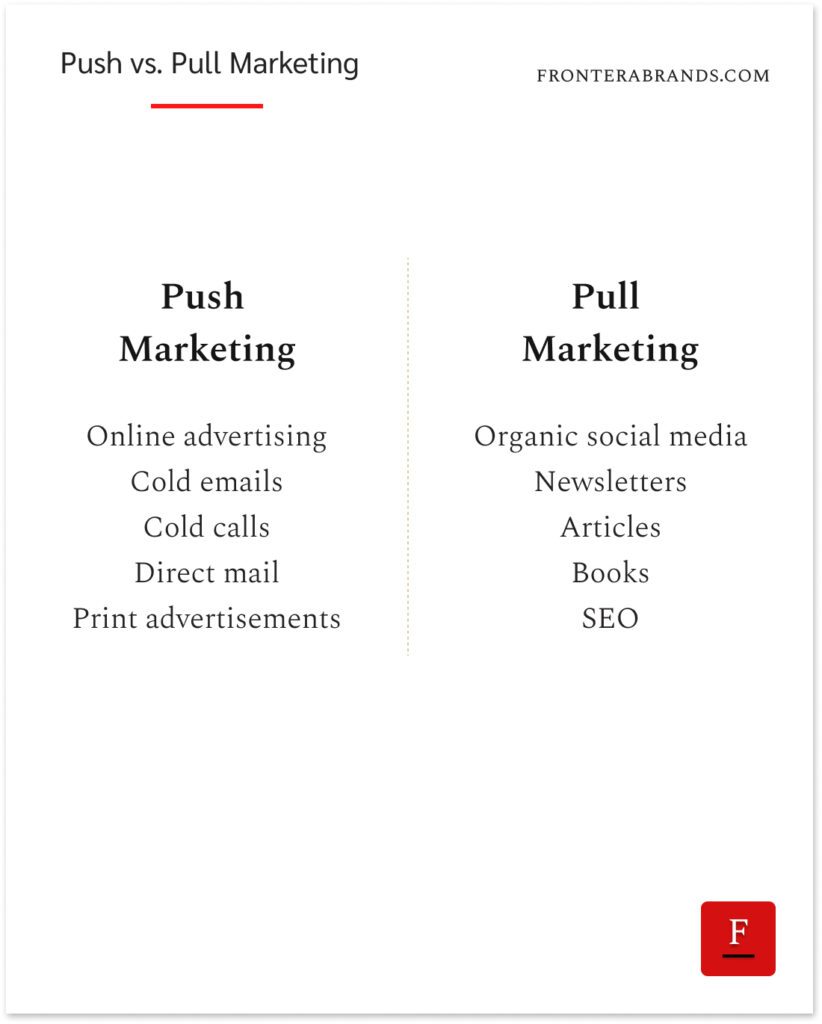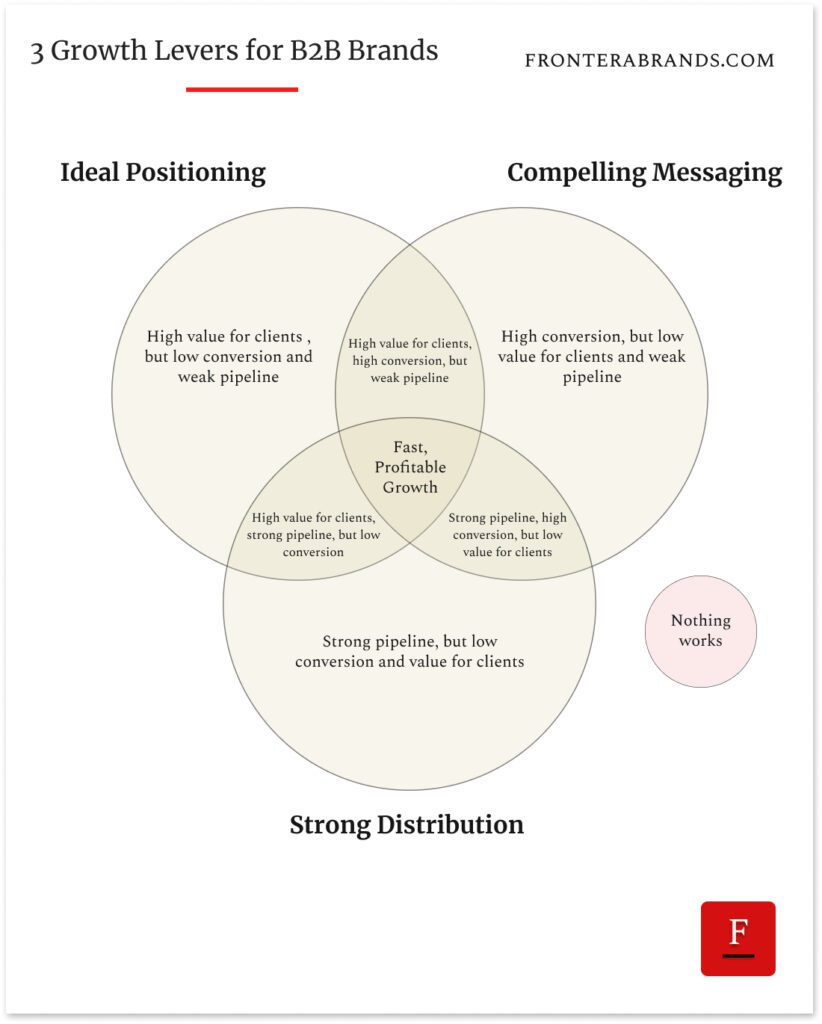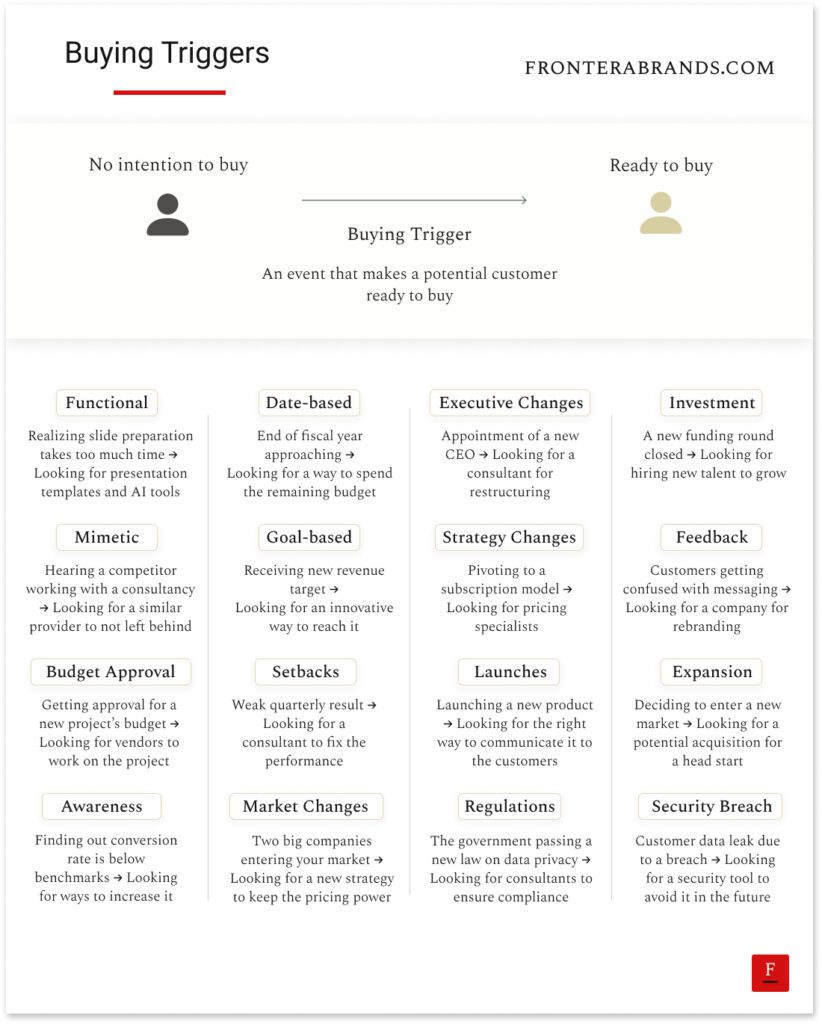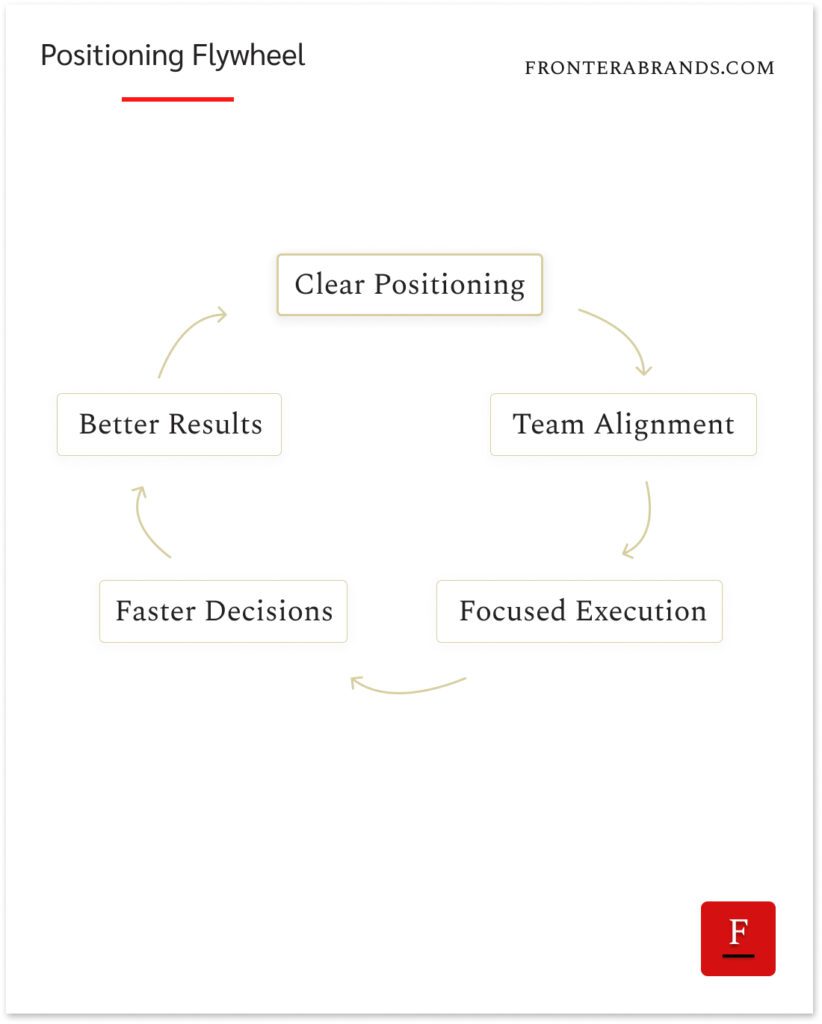♦️ Why buyers are becoming immune to “push” marketing
|
You know about this. Marketing tactics fall into two categories: push and pull. “Push” tactics are interruptions. They interrupt a potential buyer and ask for an action. Meanwhile, “pull” tactics are the opposite. You make buyers come to you by offering them content they might be interested in.
Effective push tactics get overused. And as they are interruptions, people become immune to them. One example is banner ads on websites. In 1994, AT&T published the first ever banner ad on the internet on Wired magazine’s website. The banner said: “Have you ever clicked your mouse right here? You will.” And people clicked. That ad generated a 44% click-through rate. Companies immediately saw the potential in Internet advertising. So they started advertising everywhere. More banner ads, on more sites. Some sites started putting more banners than the actual content to earn more. Fast forward 30+ years. Today, an average banner ad has a 0.5% click-through rate. Many people use ad-blockers to get rid of annoying banners. What’s more interesting is that even people who don’t use ad-blockers have become immune to them. Our eyes automatically ignore banners on websites, which is called banner blindness.
Every effective tactic and channel saturates. They get more expensive and less effective over time. Because they are based on interruption. When customers get interrupted all the time the same way, they become immune to it. How can they not? Today, people see hundreds of ads a day. Everywhere people look, there is an ad — social media, websites, billboards, flyers… Plus, AI is amplifying everything now. That means more unsolicited cold emails in inboxes, more DMs on LinkedIn, and more ads everywhere. And buyers will continue to become more resistant. It will be even harder to get results from traditional push marketing, especially for high-value B2B offers. So it’s important to change how you use push tactics to keep them effective among all the noise. How? Here are two ways: 1. Make it distinctIn 2016, image recognition company GumGum wanted to get T-Mobile as a client. However, T-Mobile was a huge company compared to GumGum. The GumGum team knew the traditional cold outreach wouldn’t work with T-Mobile. So they decided to do something unusual. From Twitter, they knew T-Mobile’s CEO John Legere was a huge Batman fan. So after brainstorming what they could do about it, they decided to create a comic book. They gathered a team of editors, writers, and designers to explain their product with the comic book’s story. The hero of the story was T-Mobile’s CEO — T-Man. And he partnered with Gums to beat the enemies. They printed and sent 100 of them to various T-Mobile offices.
He immediately posted it on Twitter, thanking them. GumGum got a lot of free press thanks to that tweet. But that was not it. They also managed to get a meeting with T-Mobile executives. And in a few weeks, they signed T-Mobile as a client — possibly a multi-million dollar contract. Now think about it. T-Mobile’s CEO and executive team probably get thousands of messages from various vendors to have a meeting. And they ignore all of them. Because they are all interruptions. But they couldn’t ignore GumGum’s package. It was distinct, highly personalized, and obviously took a lot of effort. That’s why it worked. Compare this to all the other ways companies do outreach these days. Annoying LinkedIn DMs. Generic emails asking if you have 15 minutes. But these overused tactics don’t work anymore. They even make people hate that brand. So one way to make push tactics work is to make it personalized and distinct. It has to stand out. It has to truly surprise the buyer and make you impossible to ignore. Yes, it’s not easy. It requires effort. But that’s why it works. Because buyers are already immune to overused easy tactics. 2. Don’t “push” to convertPush marketing has a natural focus on immediate results. And there is nothing wrong with chasing immediate conversions if you have a consumer product or low-priced software. Because you are more likely to sell it today. But if you have a high-value B2B offer, using push tactics for immediate conversion is not the best idea. Especially if you can’t make it so distinct and personalized like GumGum. You know why? Well, because most of your potential buyers are not actively looking to buy right now. Professor John Dawes says only 5% of businesses are in the market to purchase a service at a given moment. That means if you “push” to convert today, you’ll ignore 95% of your potential buyers and spend a lot of resources to reach that 5%. It doesn’t make sense. So instead, use push tactics as a relationship starter. Give them value with useful resources related to your expertise. Take them into your brand’s ecosystem. Don’t advertise to convert, advertise to provide value. So they can get to know you, your brand’s ideology, and the problems you can solve for them. That way, you’ll align your marketing with market reality — the majority is not ready to buy today. And of course, you have to give them a way to stay in touch with your brand over the long term. That’s why thought leadership content, resources, and newsletters are crucial. Because they allow you to stay top of mind. So when a buying trigger occurs in your potential buyers’ lives and they are ready to buy, you become the obvious choice. The moral of the story? The market is crowded, cluttered, and noisy. Don’t try to compete by imitating what everybody else is doing. Buyers are smart and immune to tasteless interruption. If you’re going to interrupt them, interrupt with value.
|
Frontera
Join 10,000+ B2B founders getting the strategies of iconic brands.
Three marketing bottlenecks keep B2B brands stuck at a certain revenue level: Wrong Positioning Ineffective Messaging Weak Distribution These problems keep the business from growing to its next stage. Some businesses just have one. Some others might have all three to a certain degree. They have different symptoms: 1. Wrong Positioning You create the wrong value and/or for the wrong clients. Your solution isn’t anchored to a specific pain or priority. You are either specialized in the wrong...
What leads your clients to look for a solution like yours? What makes them realize they have a problem? The answers to these questions matter. Because when you know your clients’ buying triggers, you can: Build your product/service for their context Talk to their real needs with your messaging Target them more easily Think about the buying triggers in our lives. Like becoming a parent. Your life changes when you learn you’ll become a parent. You start looking for parenting books, furniture...
Having clarity around your brand’s positioning has a hidden upside. We usually talk about how it helps you win clients. It raises your perceived value. It makes buyers choose you over others. But it also changes things inside the business. You know what they say. Constraints breed creativity. A blank page is scary because you can write anything. There is no constraint. But once you pick a topic, ideas start flowing. You get focused. You get creative. Clear positioning does the same. It gives...





